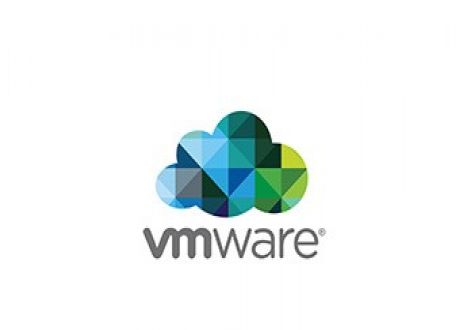- Home
- Video Courses
- Certifications
- 3V0-622: VMware Certified Advanced Professional 6 - Data Center Virtualization Design Dumps


3V0-622: VMware Certified Advanced Professional 6 - Data Center Virtualization Design Certification Video Training Course
3V0-622: VMware Certified Advanced Professional 6 - Data Center Virtualization Design Certification Video Training Course includes 8 Lectures which proven in-depth knowledge on all key concepts of the exam. Pass your exam easily and learn everything you need with our 3V0-622: VMware Certified Advanced Professional 6 - Data Center Virtualization Design Certification Training Video Course.
Curriculum for VMware 3V0-622 Certification Video Training Course



3V0-622: VMware Certified Advanced Professional 6 - Data Center Virtualization Design Certification Video Training Course Info:
The Complete Course from ExamCollection industry leading experts to help you prepare and provides the full 360 solution for self prep including 3V0-622: VMware Certified Advanced Professional 6 - Data Center Virtualization Design Certification Video Training Course, Practice Test Questions and Answers, Study Guide & Exam Dumps.
VCAP6-DCV 3V0-622 Exam Preparation Materials
Course Overview
The VCAP6-DCV 3V0-622 exam is a key certification for IT professionals who are looking to validate their skills in VMware vSphere design and architecture. This course will prepare you to tackle the exam by offering in-depth knowledge of the design principles, best practices, and implementation strategies for VMware solutions. As the demand for VMware-certified professionals increases, this course serves as a critical step in advancing your career and mastering vSphere technologies.
In this course, you will learn how to design, deploy, and manage a VMware vSphere environment with an emphasis on scalability, security, and high availability. The knowledge gained here is essential for anyone working in virtual infrastructure design and implementation, as VMware vSphere is one of the most widely used platforms in the industry.
Exam Focus Areas
To pass the VCAP6-DCV 3V0-622 exam, candidates must demonstrate expertise in several critical areas of VMware vSphere. The exam tests your ability to design and implement vSphere solutions in a way that meets the needs of businesses and organizations. This includes a deep understanding of the various design considerations, performance metrics, and configuration options available.
The course material will focus on the following major areas:
Cluster Design: Design concepts and configurations that maximize the performance and scalability of a virtual infrastructure.
Storage Design: Best practices in designing storage for VMware environments to ensure optimal performance and reliability.
Network Design: Ensuring your virtualized network meets performance, security, and reliability goals.
Security & High Availability: Learn how to design for security and minimize downtime in the VMware environment.
Disaster Recovery and Business Continuity: How to implement disaster recovery and business continuity strategies in a VMware environment.
Monitoring and Performance Optimization: Design strategies for ensuring your VMware environment is running efficiently.
Course Content
This training course will be divided into a series of modules designed to cover the full range of topics needed to succeed in the VCAP6-DCV 3V0-622 exam. Each module is carefully crafted to help you build the knowledge and skills necessary to design a VMware vSphere environment that meets the needs of modern enterprises.
Each topic will include both theoretical background and practical exercises, allowing students to apply what they’ve learned in real-world scenarios. The modules are as follows:
Module 1: Understanding VMware vSphere Design Principles
Gain an understanding of the key principles that underpin VMware vSphere design. This includes scalability, fault tolerance, and high availability.Module 2: Advanced VMware vSphere Architecture
Learn about the architecture of VMware vSphere, including how it integrates with other technologies to create a fully functional virtual environment.Module 3: Storage Design for VMware Environments
Explore storage solutions in detail, including SAN, NAS, and other storage technologies that are commonly used in VMware environments.Module 4: Network Design and Virtualization
Study network architecture and design concepts for VMware environments, with a focus on scalability, security, and performance optimization.Module 5: Security Considerations in VMware vSphere
Learn the best practices for securing VMware environments and protecting critical data from threats.Module 6: Designing for High Availability and Fault Tolerance
This module covers the design of highly available systems and fault-tolerant infrastructure to ensure business continuity.Module 7: Disaster Recovery and Business Continuity Strategies
Learn how to design disaster recovery solutions and implement business continuity plans in VMware environments.Module 8: Monitoring and Performance Optimization
This section will teach you how to monitor and optimize the performance of VMware vSphere environments, ensuring that your infrastructure runs smoothly at all times.
Learning Outcomes
By the end of this course, you will have gained a comprehensive understanding of VMware vSphere design principles, with the knowledge required to tackle the VCAP6-DCV 3V0-622 exam. You will be prepared to design and implement robust VMware infrastructures that meet organizational needs for scalability, reliability, and performance.
The skills you gain here will not only prepare you for the exam but will also provide you with practical experience in designing real-world VMware environments. Whether you are working in a small business or a large enterprise, the ability to design scalable, secure, and reliable virtual infrastructures is a key asset.
Who Should Take This Course
This course is ideal for IT professionals who are looking to advance their VMware expertise and earn the VCAP6-DCV certification. If you are currently working with VMware vSphere and want to build a deeper understanding of architecture and design principles, this course will provide you with the knowledge needed to design and optimize VMware environments.
This course is also suitable for those preparing for the VCAP6-DCV 3V0-622 exam and want a structured, comprehensive learning path to ensure exam success.
Benefits of Taking This Course
Taking this course will provide you with a clear, structured path to mastering VMware vSphere design. Not only will you gain the skills needed to pass the VCAP6-DCV exam, but you will also deepen your practical understanding of VMware technologies, making you a more effective and efficient professional. The certification you earn from passing the exam will open doors to advanced career opportunities and demonstrate your expertise in VMware vSphere to current and potential employers.
Course Requirements
Before beginning this course, there are certain prerequisites you should meet to ensure you can maximize the benefit from the content. Understanding these requirements will help you better prepare for the materials and coursework you will encounter.
Prerequisites for Taking the Course
To get the most out of this training, you should have a solid foundation in VMware vSphere and general IT infrastructure concepts. Specifically, it’s recommended that you have experience working with VMware vSphere in a professional environment, particularly in roles related to system administration, infrastructure design, or cloud operations. Prior experience with VMware products such as vCenter, ESXi, and vSphere Client will be highly beneficial for understanding the course materials.
In addition, you should have knowledge of basic networking and storage technologies, as the course delves deeply into the integration of VMware solutions with network and storage infrastructures. Familiarity with VMware’s basic features and concepts will enable you to focus on more advanced design strategies and architectural decisions.
Technical Prerequisites
You should have access to a working VMware vSphere environment for hands-on exercises. While this course will provide a significant amount of theoretical knowledge, practical experience is critical to understanding how to apply the concepts in real-world scenarios. Setting up a test environment to experiment with different configurations and design approaches will give you a deeper insight into the material and help you better prepare for both the exam and real-world challenges.
Software Requirements
You will need access to VMware vSphere software, which includes tools like vCenter Server, ESXi hosts, and the vSphere Client. Access to these tools will allow you to perform practical exercises and simulations that are crucial to understanding VMware architecture and design.
If you are new to VMware or do not have the software installed, it is recommended that you set up a virtual lab before beginning the course. This lab will serve as an environment where you can practice the design and implementation strategies discussed throughout the training.
Course Descriptions
The course content has been designed to ensure that you cover all essential topics for the VCAP6-DCV 3V0-622 exam. Each module will provide detailed explanations, followed by hands-on exercises and case studies to ensure thorough understanding.
VMware vSphere Design Principles
In this section, we’ll discuss the fundamental design principles that guide VMware vSphere implementation. Topics covered include scalability, performance optimization, and high availability. You’ll learn about the various design models and how to implement them in real-world scenarios.
Advanced Architecture for VMware Environments
Here, you’ll dive deeper into VMware vSphere architecture. You’ll study the role of VMware components such as ESXi, vCenter, and the vSphere Client in managing virtual environments. This module will also introduce concepts such as storage management, network virtualization, and the interaction of different VMware components within a larger infrastructure.
Who This Course Is For
This course is specifically designed for IT professionals who are preparing for the VCAP6-DCV 3V0-622 certification exam. If you are an IT architect, system administrator, or infrastructure engineer working with VMware vSphere, this course will help you master the design principles necessary for creating highly available and scalable virtual infrastructures.
Additionally, this course is beneficial for individuals who want to expand their knowledge of VMware technologies, even if they are not immediately planning to take the certification exam. Anyone interested in designing VMware vSphere environments for businesses, ranging from small to enterprise-scale infrastructures, will find this course invaluable.
This course is ideal for those who want to enhance their VMware skills and move into roles that focus on system design, infrastructure planning, and architecture. It’s also for professionals seeking to take their knowledge to the next level, progressing from basic administration skills to advanced design concepts.
Course Requirements
Prerequisites for This Course
Before starting this training course, it's important to ensure you meet certain prerequisites. This will enable you to maximize the value from the material and exercises provided. This course assumes that you already have a basic understanding of VMware vSphere concepts and virtual environments.
VMware vSphere Experience
You should ideally have hands-on experience working with VMware vSphere in a production environment. Familiarity with vCenter Server, ESXi hosts, and the vSphere Client will help you better understand the material, especially when working through complex design scenarios. If you do not have experience with VMware products, consider gaining some familiarity with the software first. This foundational knowledge will allow you to focus on advanced topics such as design architecture and best practices.
Understanding of Networking and Storage Technologies
A solid understanding of networking and storage is crucial for designing VMware vSphere environments. Since this course covers storage solutions, network virtualization, and the integration of VMware with external infrastructure components, you will be expected to have a basic knowledge of networking protocols and storage systems such as SAN (Storage Area Network) and NAS (Network Attached Storage). Knowledge of common protocols like iSCSI, Fibre Channel, and NFS will also be beneficial.
System Administration Skills
This course is designed for professionals who have experience as system administrators or engineers. You should have experience managing IT infrastructure, including the setup and maintenance of virtual machines, resource allocation, and monitoring tools. If you're already working in a VMware vSphere environment and are looking to deepen your knowledge in design principles, this course is tailored to enhance your skills.
Technical Prerequisites
Having access to a VMware vSphere environment for hands-on experience is highly recommended. If you don’t already have one set up, you should consider installing a test environment or lab using VMware vSphere’s free ESXi and vCenter Server versions. This will allow you to perform the practical exercises covered in the course. In addition, having access to a range of VMware management tools will provide you with the necessary platform to experiment with the design models discussed in the training.
Software Requirements
For practical exercises, you will need VMware vSphere software. This includes components such as ESXi, vCenter Server, and the vSphere Client. If you're using a test lab, you can install these components on virtual machines to simulate a production environment. Most of these tools offer free versions for students and professionals who are building their skills, making them accessible to anyone interested in the course.
Hardware Recommendations
While specific hardware requirements may vary based on the size of the lab environment you create, a relatively modern workstation or server should be sufficient for this course. At a minimum, your system should have sufficient RAM (16GB or more recommended), CPU cores, and storage capacity to support the VMware products you’ll be working with. If you plan to work with larger virtual environments or simulate enterprise-scale infrastructure, you may need to adjust your hardware setup accordingly.
Course Descriptions
Introduction to VMware vSphere Design
The first module of the course introduces VMware vSphere design principles. This section explains the core concepts of designing a virtual infrastructure that aligns with business goals. You will learn the fundamentals of resource planning, scalability, and performance optimization.
It will also cover best practices for designing VMware environments that meet the needs of high availability and fault tolerance. You will understand how to balance resources between virtual machines and physical hardware to optimize both performance and cost.
This section also sets the stage for more advanced topics, providing a foundation in understanding how VMware integrates into an organization's broader IT strategy.
Advanced VMware vSphere Architecture
In the second module, you will delve deeper into the architecture of VMware vSphere. This module covers the different components that make up a vSphere environment, including vCenter Server, ESXi hosts, and the vSphere Client.
You will learn about the architecture’s role in managing and optimizing virtual resources. Topics like clustering, virtual networks, and storage architectures are explored in detail. The focus will be on understanding how these components interact with each other to form a complete VMware infrastructure. Key concepts such as vSphere Distributed Switches (vDS) and vSphere HA (High Availability) will be explored, enabling you to design a highly available and scalable infrastructure.
Designing Storage for VMware Environments
Storage is a critical part of any virtualized environment. In this module, you will study various storage options and architectures for VMware environments. From traditional SAN and NAS to modern storage technologies like vSAN, the course will help you understand how to design an efficient storage system that meets performance, availability, and cost goals.
You will explore storage solutions in depth, learning how to balance capacity, performance, and reliability while optimizing costs. The course also covers storage policies, redundancy, and backup strategies, ensuring that you can design resilient storage systems for VMware environments.
Network Design and Virtualization
Effective network design is another cornerstone of VMware infrastructure. This module covers best practices for network virtualization and design, focusing on scalability and security. You will learn how to design virtual networks that handle heavy workloads while ensuring security and high availability.
Topics like Distributed Switches (vDS), VLANs, network security, and network performance optimization will be covered in this section. You’ll also explore how to design redundant network topologies to ensure business continuity, including failover strategies and disaster recovery designs.
Security Design in VMware vSphere
Security is an essential consideration when designing any infrastructure, especially in virtualized environments where multiple workloads share the same resources. This module focuses on best practices for securing VMware environments. You will explore strategies for securing both virtual machines and virtual networks, ensuring compliance with security standards and regulations.
This section will cover user management, access controls, auditing, and encryption, along with strategies to mitigate risks. By the end of the module, you will understand how to implement security measures that protect your VMware infrastructure from internal and external threats.
High Availability and Fault Tolerance
One of the key design considerations for VMware vSphere is ensuring high availability (HA) and fault tolerance (FT). This module will teach you how to design environments that remain operational even in the event of hardware failure or other disruptions. Topics like vSphere HA, DRS (Distributed Resource Scheduler), and FT configurations will be explored in depth.
The module will guide you through designing systems that are resilient to both planned and unplanned downtime. You will also learn about load balancing, resource scheduling, and how to implement recovery strategies to ensure business continuity.
Disaster Recovery and Business Continuity
Building on the previous module, this section dives deeper into disaster recovery (DR) and business continuity (BC) strategies. You will learn about the design principles and best practices for ensuring that your VMware environment can withstand large-scale outages or data loss.
The course will cover backup strategies, replication technologies, and strategies to recover quickly from disasters. You’ll explore the VMware Site Recovery Manager (SRM) tool, as well as other VMware-specific DR solutions, which are essential for building comprehensive disaster recovery plans.
Performance Monitoring and Optimization
The final module focuses on performance optimization and monitoring. After you design and deploy a VMware infrastructure, it is essential to ensure it continues to meet performance objectives. This section will guide you through the best practices for monitoring and optimizing VMware environments.
You will learn how to use VMware vRealize Operations Manager and other tools to track performance metrics, identify bottlenecks, and optimize resources. The course will also cover strategies for continuous performance tuning to ensure that the virtualized environment operates efficiently as workloads evolve.
Who This Course is For
IT Architects and Engineers
This course is primarily designed for IT professionals who are responsible for designing, deploying, and managing VMware environments. If you are an IT architect or engineer working with VMware technologies, this course will expand your understanding of design principles and architectural best practices.
VMware Administrators
System administrators who already manage VMware vSphere environments can benefit greatly from this course. It will take your existing knowledge to the next level by teaching you how to design more complex, resilient, and optimized virtual infrastructures.
IT Consultants
Consultants who work with clients to implement VMware solutions will find this course invaluable. The knowledge you gain will enable you to advise clients on the best design strategies and solutions for their virtualized environments.
VMware Professionals Preparing for VCAP6-DCV Certification
For those specifically aiming for the VCAP6-DCV 3V0-622 certification, this course is an essential preparation tool. It covers all the topics tested in the exam, offering practical and theoretical insights into VMware vSphere design.
Virtualization Enthusiasts
This course is also suitable for anyone who wants to deepen their knowledge of VMware and virtualization technologies. Whether you're a beginner or have some experience in IT, this course will equip you with the skills necessary to design and implement advanced VMware environments.
Student Feedback
Similar VMware Video Courses
































Only Registered Members Can Download VCE Files or View Training Courses
Please fill out your email address below in order to Download VCE files or view Training Courses. Registration is Free and Easy - you simply need to provide an email address.
- Trusted By 1.2M IT Certification Candidates Every Month
- VCE Files Simulate Real Exam Environment
- Instant Download After Registration.
Log into your ExamCollection Account
Please Log In to download VCE file or view Training Course
Only registered Examcollection.com members can download vce files or view training courses.




